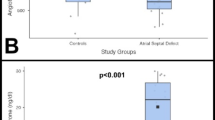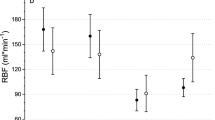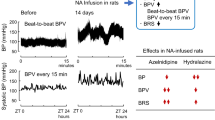Abstract
IT is well known that the infusion of 0.1–1.0 µg/min adrenaline into the brachial artery in man results in an immediate transient increase in flow of blood in the forearm followed by a fall to below the resting level. Allen, Barcroft and Edholm1 showed that this biphasic response was not due to dilatation of muscle vessels followed by constriction of skin vessels. Finding that after dibenyline, adrenaline produces only a sustained vasodilatation, Ginsburg and Cobbold2 suggested that the action of adrenaline when given alone was due to an initial stimulation of inhibitory (β) receptors followed by stronger stimulation of excitatory (α) receptors. The action of adrenaline after dibenyline resembles that of iso-propylnoradrenaline. Recently we have found that after dichloroisopropylnoradrenaline, adrenaline causes only sustained vasoconstriction. and under these conditions resembles noradrenaline3.
This is a preview of subscription content, access via your institution
Access options
Subscribe to this journal
Receive 51 print issues and online access
$199.00 per year
only $3.90 per issue
Buy this article
- Purchase on SpringerLink
- Instant access to full article PDF
Prices may be subject to local taxes which are calculated during checkout
Similar content being viewed by others
References
Allen, W. J., Barcroft, H., and Edholm, O. G., J. Physiol., 105, 255 (1946).
Ginsburg, J., and Cobbold, A. F., Ciba Found. Symp. Adrenergic Mechanisms, edit. by Vane, Wolstenholme and O'Connor (J. and A. Churchill, Ltd., London, 1960).
Glover, W. E., Greenfield, A. D. M., and Shanks, R. G., Brit. J. Pharmacol., 19, 235 (1962).
Ahlquist, R. P., Amer. J. Physiol., 153, 586 (1948).
Author information
Authors and Affiliations
Rights and permissions
About this article
Cite this article
GLOVER, W., SHANKS, R. & STANFORD, C. Peripheral Vascular Effects of Mixtures of Isopropylnoradrenaline and Noradrenaline in Man. Nature 196, 999 (1962). https://doi.org/10.1038/196999a0
Issue date:
DOI: https://doi.org/10.1038/196999a0



